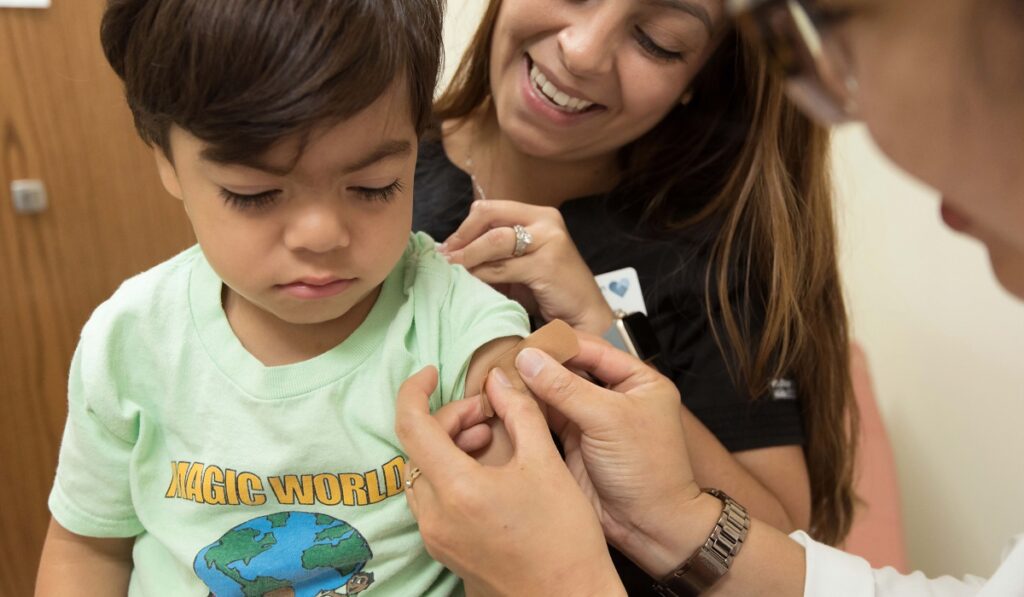According to a new study, vaccine hesitancy is a deeper issue than the prevalence of misinformation online. Rather, it reflects a deep mistrust in institutions and subsequent emotional response to perceived coercion.
Blaming misinformation and political polarization has been an easy and popular response, especially during the COVID pandemic, explains Huseyin Zeyd Koytak, a sociologist and visiting assistant professor at the University of Mississippi, and one of the study’s authors, for STAT News, but it oversimplifies the problem and does not address the root causes of vaccine hesitancy. Koytak’s team’s findings offer a chance at a course correction for public health officials who are still working to understand how to effectively promote vaccination among the populations they work with.
“Vaccine hesitancy isn’t simply about what people believe,” Koytak writes. “It’s shaped by what they’ve experienced—inequalities, distrust in institutions, and moral values that guide decision-making.”
Using social media to understand vaccine hesitancy
When trying to understand the deep issue around vaccine hesitancy, the research team turned to Twitter (now X), analyzing tweets from the first two years of the COVID-19 pandemic (translating to 50 million vaccine-related social media posts) to gain insights into the online public discourse surrounding vaccination.
The team found eight themes that arose around vaccine hesitancy:
- Issues around mandatory vaccinations;
- Constitutionality of vaccine mandates;
- Alleged adverse reactions of vaccines;
- Long-term side effects of COVID-19 vaccines (particularly related to the new and “rapid development” of mRNA technology);
- “Ineffectiveness” of vaccines;
- “Natural immunity” to diseases;
- Politics and conspiracy theories; and
- Alleged conflict of interest in the production of scientific knowledge and its dissemination by the mass media.
Researchers remind public health professionals that many of these themes, when looked at from a 30,000-foot view, reflect systemic neglect and a complex web of historic, social, and environmental factors.
While Koytak notes that political affiliation does play a role in vaccine hesitancy, it often doesn’t tell the whole story (one example of this is the political diagonalism often seen between conservative- or liberal-affiliated persons, who often share similar vaccine hesitant views). More impactful, Koytak notes, are socioeconomic factors such as poverty and lower educational attainment.
“We found that states with higher poverty rates and lower education levels were significantly more likely to see resistance to vaccines,” he writes. “These aren’t just statistics; they’re evidence of systemic neglect.”
Yet, the team repeatedly reminds readers that, even with this understanding, vaccine hesitancy is still yet more complex. When testing a number of variables Koytak’s team saw correlations arise. For example, though white, rural, working-class perspectives often dominate the conversation around vaccine hesitancy, marginalized communities of color (who have faced historic healthcare disparities) report similarly low vaccination rates.
“Vaccine hesitancy emerges not from isolated causes,” he concludes, “but from an interplay of interconnected social and economic factors.”
And the recent response by many public health institutions to frame vaccination as a moral imperative (with built in shame around not getting vaccinated—however unintentional), does more to drive people away than bring them into the fold, Koytak’s team found. As such, the research points to the need for an overhaul of how public health operates, especially since these issues are not exclusive or unique to vaccines, but can be seen in other forms across the public health spectrum. To begin that overhaul, they point to three first steps.
How to change the conversation around vaccines
Confronting the root causes of vaccine hesitancy was Koytak’s first recommendation—and to do that, a community approach is necessary. Koytak points to two major root causes that merit attention: inequality and distrust.
In lieu of going on the defensive to debunk false claims against vaccinations, public health organizations would do better to enter into their communities and start talking about, and actively addressing, the distrust in healthcare institutions that has arisen from unequal access to healthcare. Doing so would not only validate a community’s lived experiences, but also create a foundation for Koytak’s second recommendation: communication and collaboration.
Empathetic communication works wonders in public policy because it is inherently dictated not by the views of officials and leaders, but the needs of the community. “Communities respond far better to leaders they know and trust than to distant institutions or national figures,” Koytak writes. “It’s not enough to tell people what to do; we need to show them that public health is on their side.”
And finally: patience is a virtue. These issues did not arise overnight, and they will not be solved overnight either. Rebuilding trust is a marathon, not a sprint. It requires listening and learning, then responding. “If we continue to push mandates or public health messaging without addressing the deeper issues,” Koytak concludes, “we risk alienating the very people we’re trying to help.”




